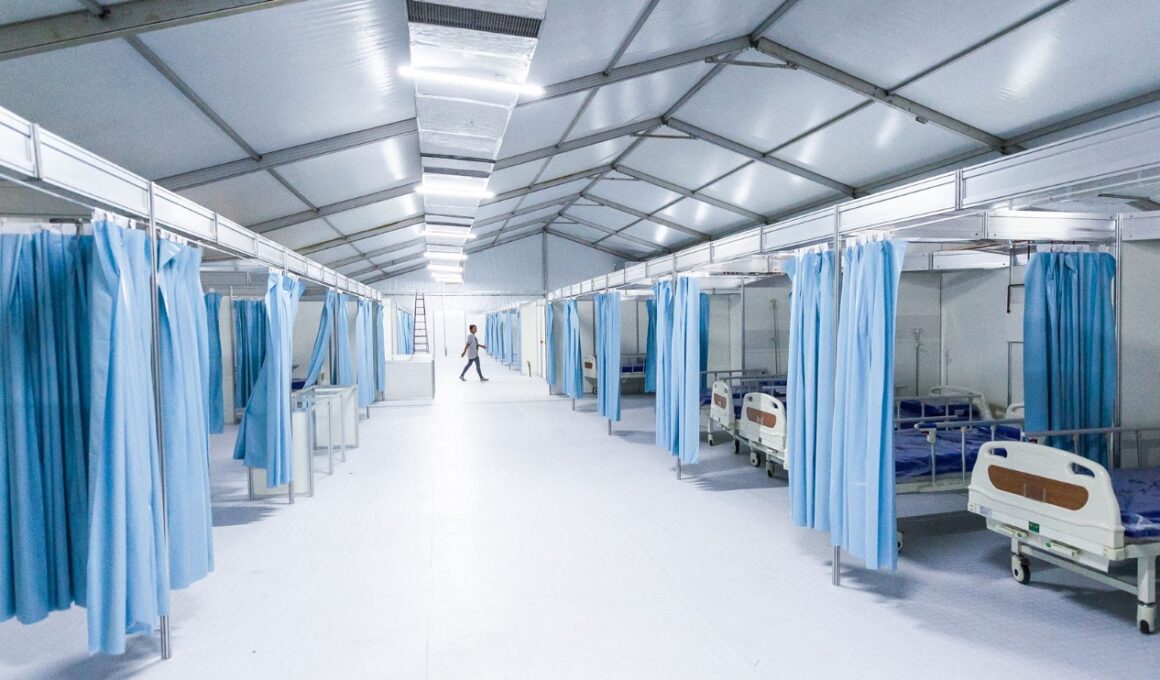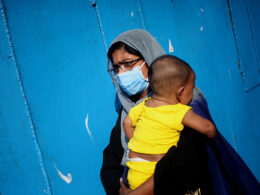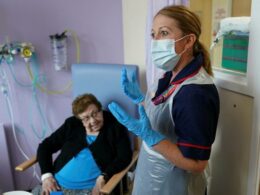HBR — Harvard Business Review
by Regina Herzlinger and Barak Richman
June 10, 2021
The Covid-19 pandemic has exposed severe shortcomings in hospital financing.
Many hospitals in hotspot areas could not provide an adequate supply of hospital beds; yet, even when filled to capacity, a number of hospitals suffered severe revenue losses.
In no well-working market should demand exceed supply while revenue falls.
These shortages took place even though the United States spends far more on health care relative to its GDP than other OECD nations.
The U.S. has no more beds per capita than the lower-cost health care systems of UK and Canada, about 2.8 hospital beds per 1,000 population, and far less than half of Germany’s.
The Covid-19 epidemic response has shown that the U.S. is blessed with heroic, excellent physicians and other health care providers, researchers, and facilities.
But it has also shown that our national health care system was woefully unprepared for the surge of Covid patients.
We believe the health care system will benefit from soberly assessing these failures.
In this article, we put the primary blame on a hospital and insurance financial model geared towards
- providing high priced services
- rather than meeting all demands for care, including pandemics.
We then discuss how to create a hospital sector that can respond to demand surges and the population’s health needs during a time of crisis.
The Hospital Financial Model
The U.S. hospital financial model largely relies on providing lucrative, highly reimbursed services — joint replacements, cardiac procedures, and the like.
These services receive priority over meeting the broader health needs of the population.
Although Covid patients might require more of some resources from a hospital and its staff, reimbursements for the types of intensive care they receive offer lower margins than elective procedures.
Treating Covid patients meant postponing lucrative, elective, and non-emergent procedures.
The pandemic illustrated not only the consequences of this business model, but also an inability to deviate from it.
Even when New York City erected a pop-up hospital for Covid patients, many beds remained empty because these emergency “hospitals” were not connected to the traditional, broader health system.
All-too-many hospitals failed to navigate patients to available beds and integrate surplus patients into a chain of referrals and ongoing care.
A Hospital System That Rises to the Occasion
It is one thing for the hospital fee-for-service payment system to prioritize lucrative services in normal times. It is quite another to fail to meet an acute surge in demand.
We have some observations that might shape how hospitals can approach the next crisis.
First, we should not think in terms of hospital beds but in terms of patient services.
Though it is difficult to increase the number of beds in specific hospitals, it is possible to expand inpatient care, especially for a temporary period, in non-hospital settings.
Many organizations should be capable of providing remote intensive care, perhaps even in patient homes, with advanced monitors, sensors, telemedicine, and a flexible workforce of nurses and other physician extenders.
Among other large firms, the insurer, Humana, and the Dutch patient monitoring firm, Philips, have entered this “hospital to home” field with massive investments.
Second, we should not think of hospitals as individual providers, but instead as part of a system that provides nationally urgent services.
In this sense, we can compare hospitals to banks, which compete with each other while also engaging collaboratively to avoid crises.
For example, banks lend to each other when one faces a liquidity crunch, and they operate in markets with SEC transparency requirements that allow the entire sector to adapt to macroeconomic needs.
These market structures help banks meet surges in withdrawals, sudden community economic needs, or other challenges in which demand for capital suddenly rises.
Hospitals can adopt similar safety mechanisms.
- Mutual referral systems would enable patients’ diversion from crowded hospitals to sites with available capacity.
- Information systems should enable hospitals to determine the available capacity and constraints of nearby hospitals, as well as the availability of specific components, such as ventilators or PPE.
Perhaps HHS realized the value of disseminating this kind of information, since in December 2020 it started sharing publishing hospital-level capacity data.
Having lacked this information for most of the pandemic, however,
- many hospitals in 2020 over-estimated surges and thus hoarded supplies,
- while many under-estimated and were frantically providing intensive care in hallways and other ill-suited locations.
Third, insurers should assure that their network of providers could secure emergency care in anticipation of times of crisis, — perhaps requiring hospitals and other providers to supply contingency plans for demand surges.
Imagine if some Medicare Advantage plans advertised that their benefits include networks with the capacity to respond to an epidemic.
Seniors might be attracted to those promises, and assuring this capacity could help push local hospitals and other providers to develop contingency offerings for intensive care.
Lessons and Implications for Policymakers
Government payment policies may have helped nurture the current hospital financial model, but government action can also play a meaningful role in reforming it.
Certainly, policies that foster competition will heighten the urgency for hospitals and insurers to meet patient needs.
Payment reform may also force a move from the prevailing hospital financial model.
Policymakers could facilitate information exchange in the hospital sector, to allow providers to anticipate, prepare for, and react to demand surges.
A national initiative could inform hospitals about local ICU capacity and national availability of critical resources.
An informational infrastructure would enable hospitals to share availability or alert others to imminent shortages.
If the FASB required this disclosure in the hospitals’ financial statements, financial analysts of both nonprofits and publicly traded for-profit chainswould include emergency capacity in their assessments.
Policymakers should also require that “contingency plans” be included in the essential health benefits that insurers must cover.
Plans for the next pandemic should not only be constructed atop the painful lessons we learned over the past year, but also other likely demand surges.
We know that earthquakes, industrial accidents, extreme weather, new infections, and other unfortunate disasters are in our future, and we need our health system to be prepared.
The planning should start when we purchase our insurance coverage, not when we need medical treatment.
If contingency plans were included in the financial disclosure required by the SEC, analysts of the hospitals’ financial condition would highlight inadequate plans.
Inclusion among covered insurance benefits and disclosure in the financial statements would help assure that this backup capacity is a reality, rather than an initiative forgotten after the emergency passes, as so often happens with stockpile initiatives.
Other creative policies could have a considerable impact in this moment of crisis and plant the seeds for meaningful change.
- For example, during the pandemic, public and private payers relaxed restrictions on coverage and reimbursement for virtual medicine, resulting in an explosion in the number of telemedicine visits.
Government support will help assure continuation and spark a transformation of the structure of the health care system.
Virtual medicine means less need for centralized and expensive facilities, and deemphasizing location enables increased competition among providers.
- Policymakers could also relax licensing restrictions, so providers have more flexibility in directing medical teams to places where they are needed.
Physicians and nurses could work outside their licensed area,
and patients could receive services via virtual technologies, home care, or intensive care in non-hospital settings.
Health care policymakers must remain farsighted to create a transition to the better system of tomorrow, even as they navigate the current emergency.
Their attention should focus on creating population-wide capacity and reforming a hospital financing model that produced shortages during a time of great need.
About the authors
Regina E. Herzlinger, is the Nancy R. McPherson Professor of Business Administration at Harvard Business School in Boston.
She is the author of Market-Driven Health Care (Perseus, 1997) and Consumer-Driven Health Care (Jossey-Bass, 2002).
She chaired Harvard Business School’s Consumer-Driven Health Care Conference in 1999.
Barak Richman, is the Edgar P. and Elizabeth C. Bartlett Professor of Law and a professor of business administration at Duke University.
Note: The authors are grateful to Professor Pinar Karaca-Mandic and Zach Levin of the Carlson School at the University of Minnesota for their discussions of the University of Minnesota Covid-19 Hospitalization Tracking Project.
Originally published at https://hbr-org.cdn.ampproject.org.












